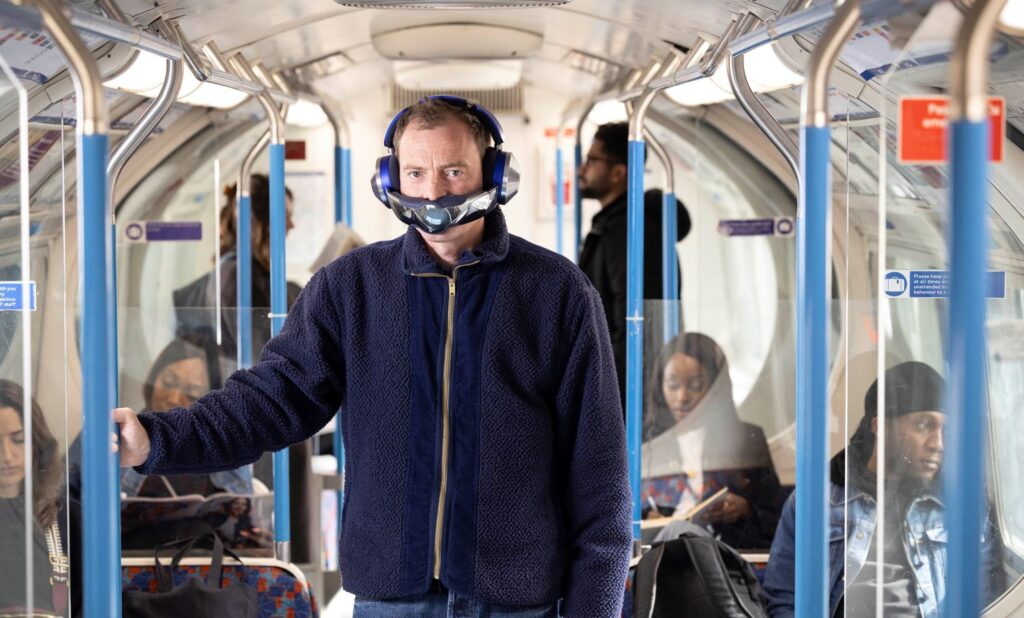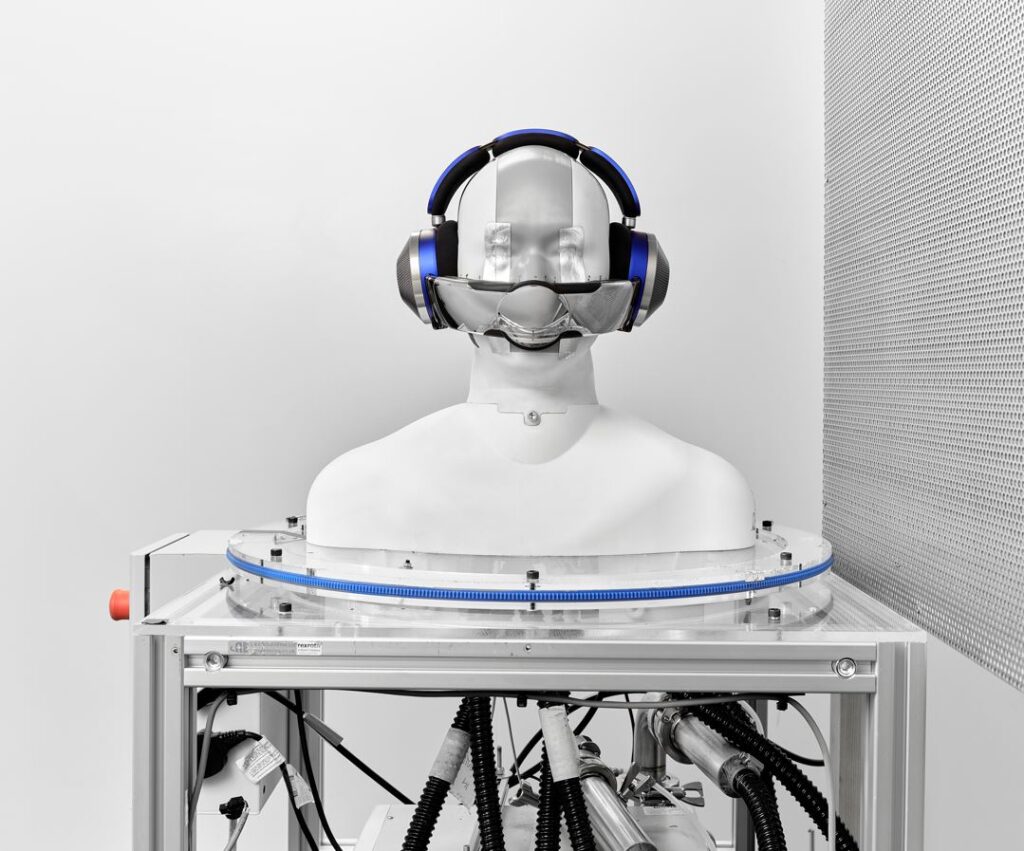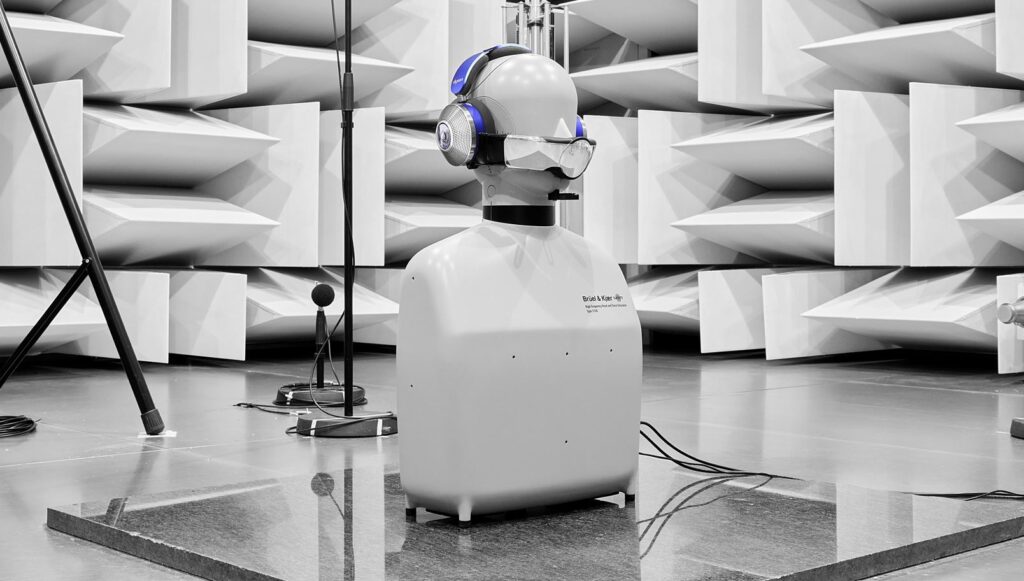
Here’s how the Dyson Zone air purifying headphones were created
Announced to the world just a few short minutes ago, the Dyson Zone is the brand’s first foray into personal wearables for the new normal. Combining an air purifier and a pair of noise cancelling headphones into one wearable form factor, the Dyson Zone is unlike anything ever made or issued in the company’s inventory of floor care, air purifiers and haircare which begets the question as to its creation. Here’s how the Dyson Zone air purifying headphones was created straight from the horse’s mouth.

Jake Dyson, Chief Engineer with the Dyson Zone air purifying headphones
Dyson Zone air purifying headphones design and concept
Officially slated for launch in Autumn 2022, Dyson hasn’t mentioned any specifics in the nature of the design in terms of the components used for the digital motors or the acoustic hardware save that they’re top of the line. They did however elaborate on its creation and the broad concepts for how it works.
The Dyson Zone’s design and the concept for it wasn’t something out of the blue and is a concept that has been experimented on and refined for years – 6 years in the making to be exact and the culmination of three decades of expertise in airflow, filtration and motor technologies micronised into a wearable form factor. The fact that it’s now ready for the new normal that we live in is a serendipitous coincidence.
In the Dyson Zone air purifying headphone, the compressors in each earcup draw air through the dual-layer filters and project two streams of purified air to the wearer’s nose and mouth, channelled through the non-contact visor.
Sculpted returns on the visor ensure purified airflow is kept near to the nose and mouth and diluted as little as possible by external crosswinds. The Dyson Zone delivers rich, immersive audio and relief from unwanted city noise thanks to advanced active noise cancelling (ANC), low distortion and a neutral frequency response, to faithfully replicate music or audio as the creator intended.

Dyson tested hundreds of prototypes before finalising the design of the Dyson Zone air purifying headphones
According to Dyson, over 500 prototypes were created and rejected across this 6-year time period before the design reached its final form which is radically different from its original prototype design that had a snorkel-like mouthpiece for the user to don while a backpack held the motor and hardware. Instead of the snorkel, the final design of the Dyson Zone is a contact-free visor that delivers clean air without full-face contact – a brand-new clean air delivery mechanism.
Developing a non-contact solution was a must for Dyson engineers, to avoid the discomfort and irritation often associated with full-contact alternatives. The visor, therefore, was a critical element. The airflow pathways and visor design are central to delivering pure air. The geometries of the visor and the visor returns, alongside the central mesh that diffuses the two jets of airflow, ensure that the purified air exiting the filters is effectively delivered to the nose and mouth in crosswinds, and for the wearer’s specific facial shape.
Going beyond existing testing methods, Dyson engineers use a breathing manikin (hilariously named Frank) fitted with medical-grade mechanical lungs and sensing equipment, which ‘inhales’ pollution replicating human breathing patterns in a controlled chamber. They then measure the pollution level within the nose and throat to determine the filtration efficacy of those particles which would otherwise end up in Frank’s artificial lung.

The prototype design of the Dyson Zone air purifying headphones had a snorkel for a mouthpiece with a backpack to contain the motor and air purifying apparatus. 500 prototypes later and we have the final sleek form of the Dyson Zone as we see it now.
Precision-engineered compressors within the earcups draw air through the dual-layer filters, intelligently designed to fit within the considerable space constraints of a headphone.
The negatively charged electrostatic filter media captures ultrafine particles such as allergens, and particles from sources such as brake dust, industry combustion and construction whilst a potassium-enriched carbon layer captures city gas pollutants like NO2 and SO2. The compressor channels the purified air to the wearer’s nose and mouth via the contact-free visor, formed with flexible returns that channel the flow of purified air to the wearer’s nose and mouth.
Dyson Zone air purifying headphone – ear cushions and the science of comfort
Every head on the planet is unique. As Dyson’s first wearable, Dyson engineers had to think about comfort in a new way. Detailed research into head and face geometries meant engineers could measure how the Dyson Zone air purifying headphones would sit on and perform on different heads– informing the clamp force of the headband, the geometry and materials of the visor, the adjustability of the machine and much more.
Taking inspiration from the shape and design of a horse’s saddle, the Dyson Zone is engineered to distribute weight over the sides of the head, rather than on the top. A saddle typically curves over the horse’s spine distributing the load through contact with the areas left and right of the backbone – a format used for the central cushion on the headband.

Every aspect of the Dyson Zone air purifying headphones including its acoustics and noise cancellation performance was tested in their vaunted sound chambers that measure even the subtlest noises
The development of the ear cushions is important for three reasons: comfort, on-head stability and passive attenuation. Foam is an obvious choice for ear cushions but Dyson engineers dug deep into the make-up of different foams to choose the most suitable material based on density, rate of compression and spring-back rate – all of which change the way pressure translates onto the head. When choosing the optimal foam for the ear and headband cushions, it was important to balance the comfort it provides, its stability when moulded to the ear, but critically the acoustic benefit it provides.
Moulding around the ear increases the size of the contact points providing better sealing – and inhibiting additional urban noise entering the ear. The cushion is purposefully flatter than conventional ear cushions for both attenuation and comfort, and the cushions are angled in line with the angle of the ear on the head for optimal comfort.
Where were the Dyson Zone air purifying headphones created
According to Dyson, the creation of their latest wearable was a team effort by multiple engineers spread across the UK, Singapore, Malaysia and China. The test engineers in the Dyson Malaysia Development Centre took point in ensuring that the Dyson Zone air purifying headphones met the brand’s standards for performance and durability at their test labs in Malaysia as well as testing it in warmer climates and higher humidity locales versus that in the UK. It looks like a very promising wearable indeed and hopefully we get our hands on a test sample soon!
